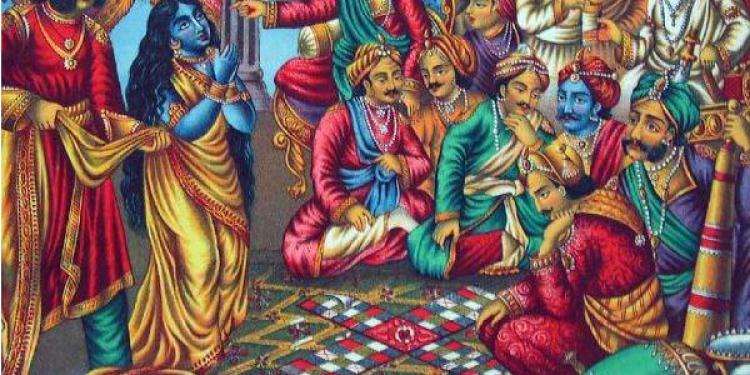Gambling in ancient India: the passion for pachisi
Posted: April 13, 2017
Updated: October 6, 2017

Gambling in Ancient India was not just an everyday pastime but also a mean for conflict resolutions>
Similar to the other ancient civilizations, gambling in the Indian culture has been present from the beginnings of the Indian civilization. Hindu Mythologies which date back to 2000BC are the primary sources reporting on gambling games played in these times. A common opinion shared among anthropologists is that Indians were considering gambling games to be one option for resolution of conflicts between two opposed sides. It is much later, as gambling news report, that the gambling games became an everyday pastime for the Indians.
• The Indian mythology is a source for early gambling games played in this civilization
• Yudhishtira’s story is also used as example of gambling problem
• Instead of dices the Indians used vibhitaka nuts in many gambling games
The mythological dimension of gambling in ancient India
The Great Indian epic Mahabharata is one of the main sources which report on the role of gambling games in ancient India. Namely, it contains a story which starts with a dice game called Chausar played between King Shakuni and Yudhishtira, whose families were in conflict. The dice “match” was a way to resolve this conflict.
Shakuni managed in the end to win the Kingodm of Yudhishtira. However, the game was far from honest, as the dice of Shakuni were loaded and Yudhishtira was not aware of this fact. They continued playing until at last instance Yudhishtira ends up gambling away himself, his brother and his wife, Draupadi. Yet, when the family of Shakuni, the Kauravas, try to dishonour Draupadi, the God Krishna comes to her rescue, wrapping her in cloth.At the end of the story Yudhishtra is also vindicated and taken to heaven by the God Yama.
In the Ramayana there is also mentioning of gambling games and especially gmabling boards. The board gambling games here are generally referred to as “aksa” while references other than Ramazana call them “devana”, report online gambling sites in the UK.
Games played in ancient India: Pachisi, the national game of India
While the Greeks and the Mesopotamians were using astragali for playing dice games, Indians employed the nuts of the “vibhitaka” tree. These nuts have five or more flat sides, which made it possible to be used as we currently use dices. Eventually vibhitaka nuts were replaced by astragali and cubical dice when tother games emerged. The appearance of the Pachisi game introduced the use of shells in board games too.

Pachisi is a game played on a board which is shaped like a symmetrical cross. The player moves around the board according to the outcome of the throw of six or seven shells, with the number of shells resting with aperture upwards indicating the number of spaces to move. The name “pachis” means twenty-five, which is the largest score that can be thrown in the game. There are other versions of this game, as online gambling sites in EU report, one of which is the chausar, the one played by Yudhishtira and Shakuni.











